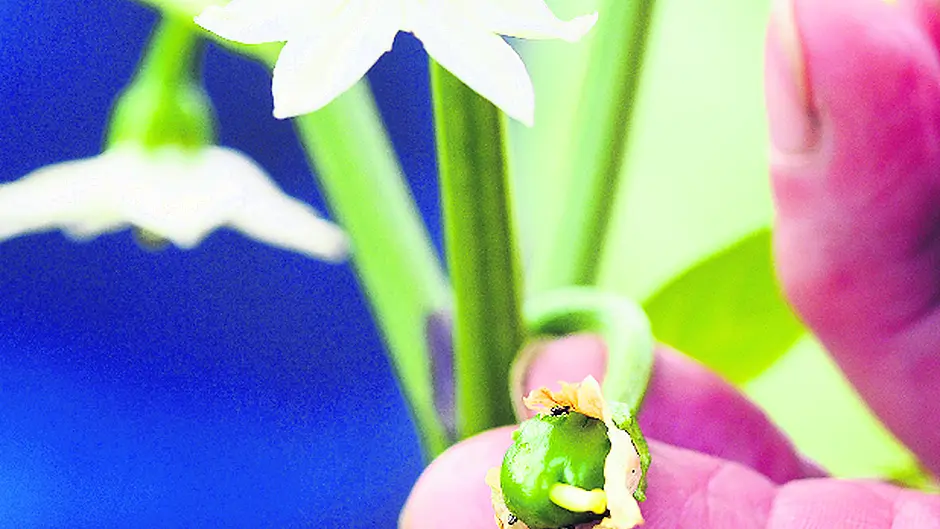Late July can bring change to the garden and all may not look as bright, bursting and full as promise as it did earlier in the year.
cThis is all completely natural as some plants reach their full potential and others have already passed their best.
A garden is an ever changing work of art and it is important to move with it: harvest often, watch out for problems, deadhead as appropriate, and remove and replant as needed. If diseased plants can’t be treated, then remove them and start again: there are always new plants to be bought, or new seeds to be sown to fill any gaps.
Many plants will flower for longer if dead flower heads are removed. This keeps the plant looking good and it can extend the flowering period, or encourage a second flush of flowers in the autumn. Gardeners talk about ‘deadheading’, which simply means snipping or pulling off any flowers that have started to fade and are past their best. Other plants, such as sweet peas, will flower for longer if flowers are cut when at their best, and certainly before they start to form seedpods. It’s really not a hardship to cut big bunches of these gorgeous scented flowers to bring into the house, but the difficulty comes in also maintaining a lengthy display outdoors.
Keep plants watered well to encourage more flowers and remove flower stems as soon as they start to fade.
It takes a small bit of work to keep sweet pea plants flowering for a long period; the alternative, if you prefer it, is to leave plants grow as they want and have an abundant blaze of colour for a shorter time.
Sow now for later crops
Some gardeners grow a spring and summer veg garden and are very happy with that. Others plant just a few leeks and cabbages, and others push the range much wider again. Whatever suits each gardener is fine, but I would urge those with the space to give some July sowings a try. A wide range of crops can be sown now and further sowings can be made in August and September.
It isn’t hard to grow a mixed variety of vegetables to harvest from autumn through to spring. If you have a greenhouse or polytunnel, then growing winter veg makes a lot of sense. There are so many things to try, and plants need much less attention in the colder months. If space is full at the moment, then start sowings in trays and pots. Plants can be potted on, if needed, and planted into the borders when space is available.
Outdoor beds
Try sowing for outdoor beds: Spring cabbage, kales, perpetual spinach and winter spinach, Swiss chard, winter turnip, corn salad, rocket, landcress.
Inside
Try sowing in a greenhouse or polytunnel: All of the above plus pak choi, kohl rabi, beetroot, early carrots, dwarf French beans, winter purslane, and a few seed potatoes for Christmas roots.
It is worth trying a range of salad leaves and hardy lettuce, both indoors and out. Keep these watered in any warm weather so they don’t bolt.
I grow these in the polytunnel each year and it can be hard to know until August, or even September, just what sort of crop to expect. Plants are pretty hardy and can crop right through a winter if it is a mild one. However, they do like lots of sun and dry conditions to produce plenty of large ripe fruits. Plants need a reasonable amount of water too, but on the soil rather than the leaves.
Plants should have lots of flowers in July. Give stems a gentle shake to aid pollination and allow small fruits to set. I usually pull any remaining petals from around the set fruits (in a poor year, petals may moulder and cause the fruit to rot).
If light levels are low, try spreading silver foil on the ground to reflect in more light. Make sure stems and branches are supported so they don’t snap under the weight of fruits and take action if you spot greenfly on the leaves, or red spider mite.
If all goes well and the weather is kind, the first fruits can be picked in August and you can continue picking until the first really cold November or December night.
Beetroot time
It’s time to harvest March and April sown beetroot. The young roots are sweet and delicious. Try them roasted with lemon juice, olive oil and seasoning. And if you have a glut, you can pickle your own. Harvest before stems bolt and tough fibres grow through the roots.
It’s well-worth sowing beetroot undercover now. Sow direct in drills, or sow individual seed in modules and plant out 5cm apart when space clears.







